
2023


Meet the student leadership team behind the INSPIRE Engineering Gift Guide!









Electronics & Robotics Kit | Plug & Play, No Coding Required
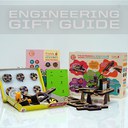
Electronics can be a tricky concept to understand, but the Electronics & Robotics Kit* by TinkL Tinker Lab@Home from Butterfly EduFields allows children to build their own machines and robots complete with circuitry. Use wires and sensors to build many unique machines, from musical alarms to drawing robots. Learn how to build different designs with complex sensors and integrated robotics while also testing and improving on your design. Concepts of engineering, iterative design, and spatial reasoning are all practiced using the Electronics & Robotics Kit. ― Jaden Hernandez, Purdue Reviewer
Codie The Coder
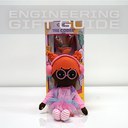
Codie The Coder doll by Surprise Powerz is a great gift that inspires young girls to strive for STEM careers. Representation is incredibly important to see at a young age, and this doll shows that anyone can be an engineer. Codie not only shows young girls of color that they can be a coder just like her, but the doll uses vocal prompts to explain basic coding concepts in an age appropriate way. The doll encourages the user to solve logical puzzles with basic programming concepts. This toy promotes computational thinking, logical thinking, and concepts of engineering communication for children as young as two years old. ― Daisy Coble, Purdue Reviewer
The Smart Student's Guide to Smart Manufacturing and Industry 4.0 (2021 Edition)
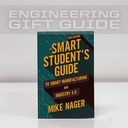
Do you have a high schooler in your life who is looking at careers in STEM but does not know where to start? The Smart Student’s Guide to Smart Manufacturing and Industry 4.0 by Mike Nager may be the perfect book for them. The art of combining everything from eco-friendly factories to new-age automation to even artificial intelligence, Nager convinces any reader that smart manufacturing is the wave of the future. Challenging an older reader’s logical and critical thinking skills, perseverance, and principles of science, engineering, and math, The Smart Student’s Guide to Smart Manufacturing and Industry 4.0 is a great introduction to the 4th industrial revolution and opens reader’s minds to the career opportunities that lie ahead. ― A.R. Miller, Purdue Reviewer
All About Smart Manufacturing
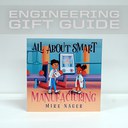
Know a curious kid who wants to learn more about how things are made? The All About Smart Manufacturing picture book from Industrial Insights LLC demonstrates how every item in your house is a product of engineering. Manufacturing engineers have a hand in getting every product that we use onto store shelves. This book shows the process of manufacturing, and what different processes and robotics are used to store and transport products. Learn to question where the items you use and see every day come from, and how much work goes into producing them. Readers can expect to practice their engineering communication skills, and logical and computational thinking skills. ― Daisy Coble, Purdue Reviewer
How to Explain Coding to a Grown-Up
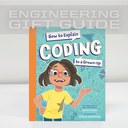
Many adults and even engineers struggle to understand programming. However, the book How to Explain Coding to a Grown-Up by Ruth Spiro makes complicated programming topics accessible through the lens of a child explaining coding to an adult. Functions are summarized by playing on a playset, while algorithm flowcharts are interspersed among the beautiful illustrations. Driving home core engineering competencies of computational thinking, logical thinking, and problem-solving, this beautifully written and illustrated book will be fun and informative for children and adults alike. ― A.R. Miller, Purdue Reviewer
Hydraulic Boxing Bots
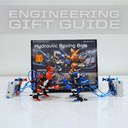
Thames & Kosmos' Hydraulic Boxing Bots are a fun and creative way to allow a child in your life to play with a toy they spend the time building themselves. Children learn how the internal mechanisms of the toys operate, as well as how hydraulics are used. An attached booklet allows children to make connections between the hydraulic systems they are fabricating, and the usage of hydraulic systems are in real-world engineering disciplines. The Hydraulic Boxing Bots are great fun to play with siblings or with friends, since users build two robots and battle against each other. While building the kit can take a while, children practice not only spatial reasoning and fine motor skills, but also perseverance and engineering communication. ― Daisy Coble, Purdue Reviewer
Newton's Apple: Tightrope-Walking Gyrobot
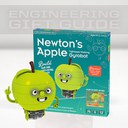
Has your child ever wondered how rockets steer, plane controls work, or space telescopes maintain their position? The gyroscope, the amazing technology behind all of these inventions, is a great introduction to complex machinery to any child. The Tightrope-Walking Gyrobot by Thames and Kosmos uses a motorized gyroscope to walk along thin objects including the edges of rulers, ropes, and anything else you dare to try. Accompanied by a detailed manual, users gain knowledge about gyroscopes and the roles they play in our world, as well as the physics behind them. This toy is a great choice for any user looking to improve their physics knowledge, practice spatial and logical reasoning, and learn more about the technology around them. ― A.R. Miller, Purdue Reviewer
KAI: The Artificial Intelligence Robot
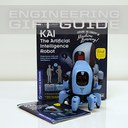
Artificial Intelligence has been a blossoming topic this year that will only continue to grow. Introducing your children to the basics can give them a head start, and make a seemingly scary topic a lot more accessible. This toy takes the wide, complex topic of artificial intelligence and makes it simplistic enough that children as young as ten can understand it. An included booklet explains why and how artificial intelligence is used in different fields while the KAI toy allows children to train an “artificially intelligent” robot that they build themselves, practicing a hands-on understanding of the topic. Build a robot, gather data, and execute code with KAI: The Artificial Intelligence Robot by Thames & Kosmos. ― Daisy Coble, Purdue Reviewer
Spintronics Act One
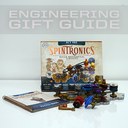
Upper Story LLC’s Spintronics Act One is a uniquely inventive toy that teaches kids about making circuits without the use of electricity or batteries. Users mimic different parts of an electrical circuit with physical hardware; wires become chains used to link together different resistors and connect switches to the motor. The included graphic novel encourages users to safely build different types of mechanical “circuits'' driven by the included pulley powered motor, while evaluating different circuits and communicating their findings in a way that meets professional standards. Allow a child in your life to go on a fun adventure while learning how to draw and construct circuits used in a variety of engineering jobs. ― Daisy Coble, Purdue Reviewer
